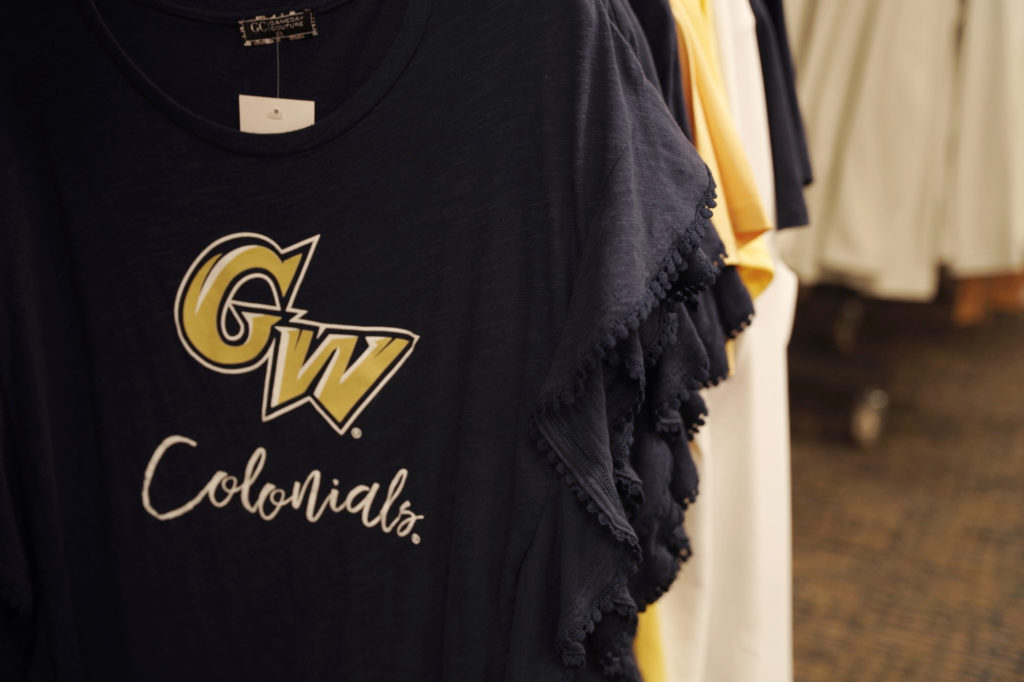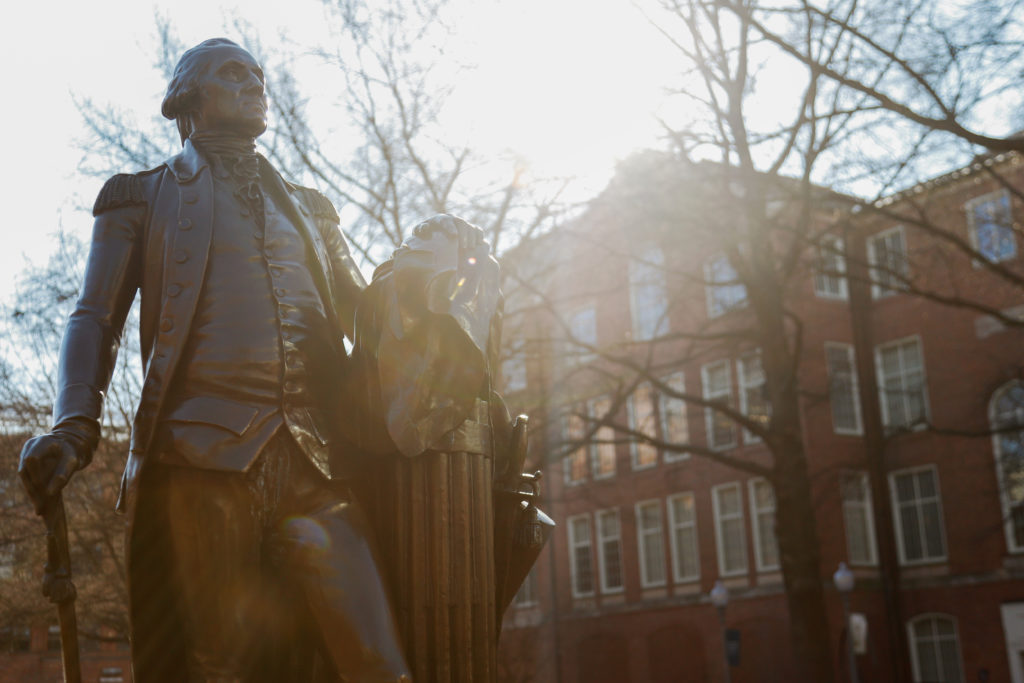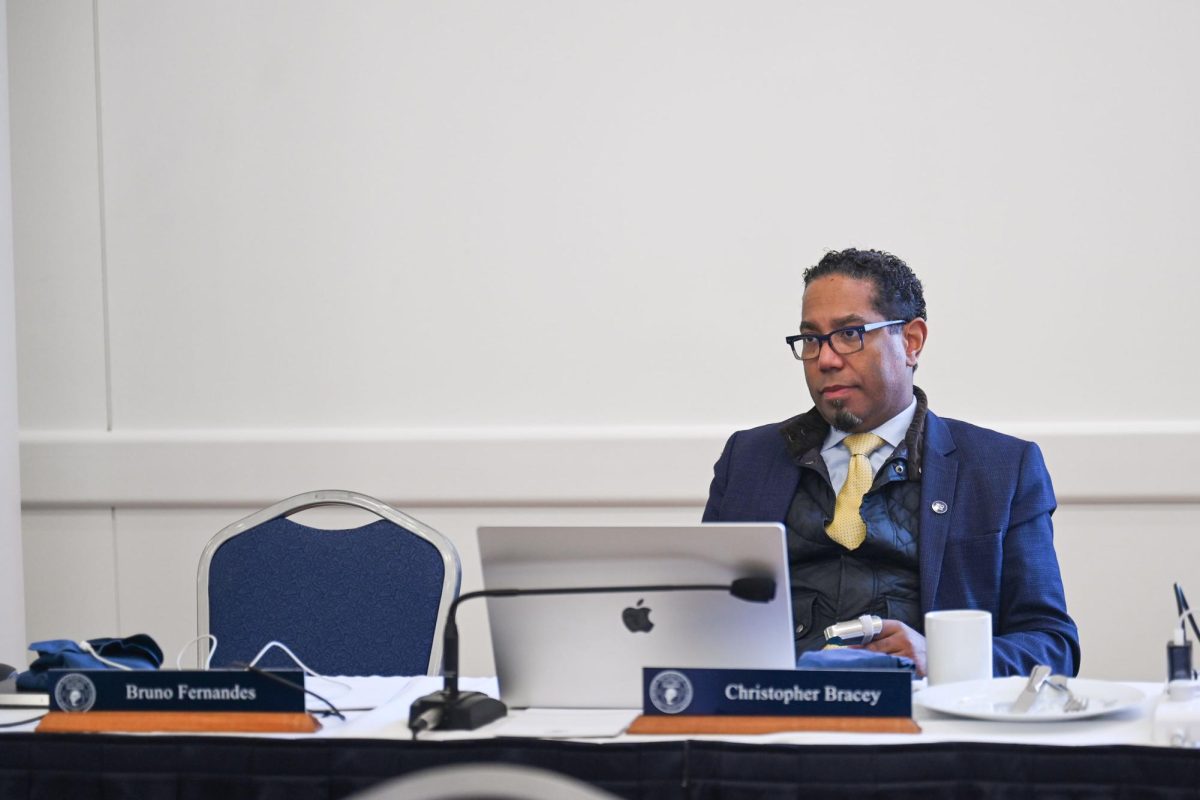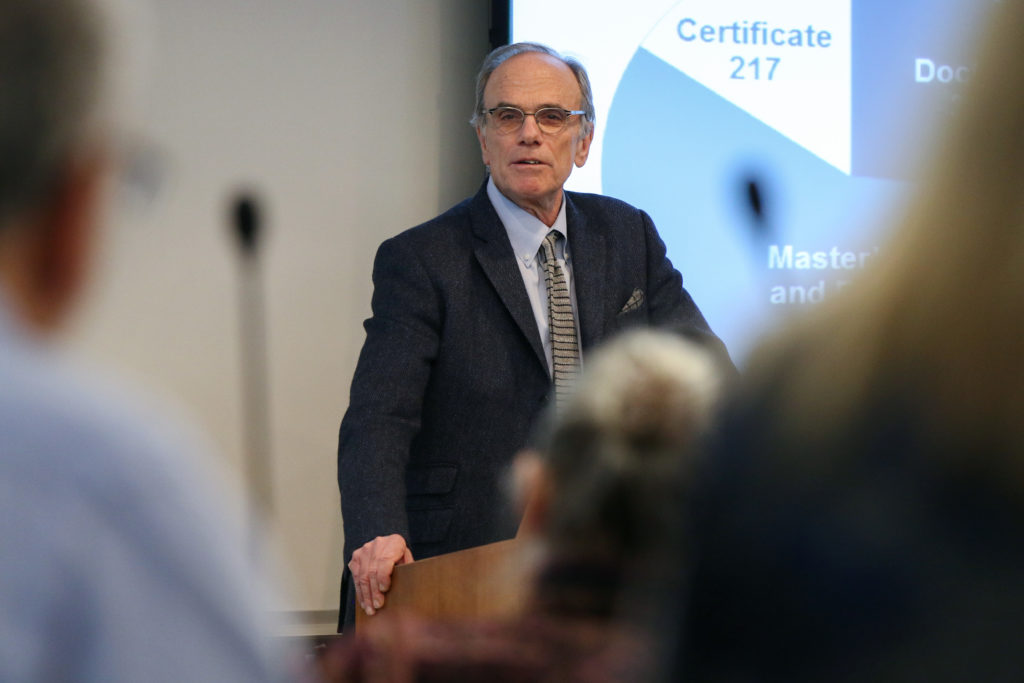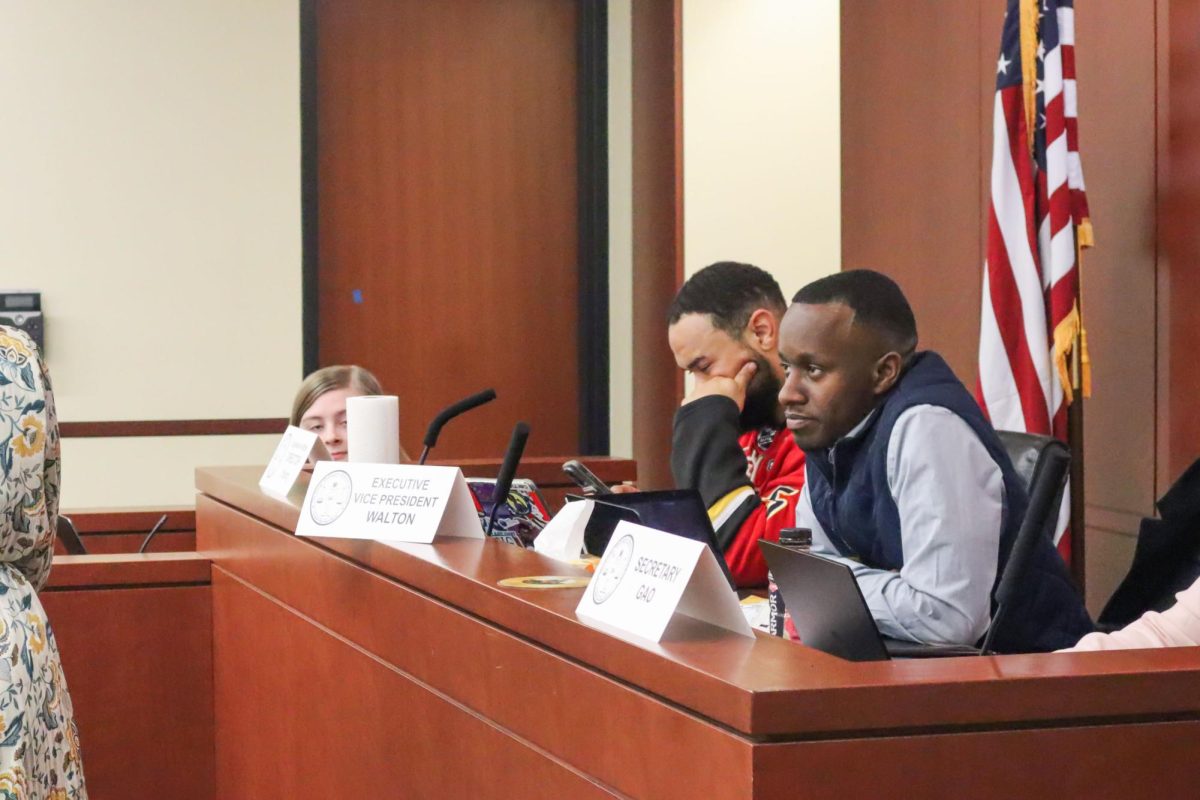Officials have remained quiet on the potential costs of replacing the Colonials moniker.
The Board of Trustees voted to retire the Colonials moniker in June after years of pressure from student activists who said it glorified the legacy of international colonialism, slavery and racial discrimination but officials have declined to comment on the potential cost of changing the moniker. Experts in higher education marketing and branding said changing a moniker includes costs like updating Colonials-branded merchandise and campus facilities renovations in spaces like basketball courts.
University spokesperson Josh Grossman declined to comment on how they plan to fund the moniker change, what materials around campus would have to be updated due to the new moniker and when officials would consider the transition to the new moniker complete.
Officials said in September that they partnered with Sullivan, a New York-based branding firm, and created an online engagement form last month to garner feedback from current and past members of the GW community on their thoughts for the next moniker.
Erin Hedlun – the senior director of marketing and communications at Evangel University, a small university of about 2,200 undergraduate and graduate students – said Evangel spent about $500,000 to change its mascot from the Crusaders to Valor in 2021 because the university did not want to associate itself with the series of religious wars between Catholics and Muslims. She said updating the mascot’s image on the wooden basketball court floor, athletics scoreboard and the street signs on campus accounted for most of the cost.
“The time is now, and we kind of knew that it wouldn’t be an inexpensive opportunity, but it was decided that the cost was worth it,” Hedlun said.
She said Evangel officials did not factor the potential cost of replacing the mascot’s image across campus into the decision to retire the Crusader mascot because the Crusades represented a “dark” time in history. She said Evangel students, alumni and the broader community have “embraced” the Valor mascot and officials noticed an increase in donations to the university since they retired the Crusader mascot last year.
“We found that communicating often and clearly and with transparency about how we were deciding on a new mascot was really critical in our community, embracing it like they did,” Hedlun said.
Jalisa Fulwood, the assistant athletic director of media relations at Howard University, said she worked at Centre College – a small university with about 1,300 students in attendance – as the school was in the process of switching its mascot logo from a Colonel to an Eagle in 2018 because the university wanted to “divert” away from the logo’s semblance to a Civil War colonel.
Fulwood said the cost of purchasing new sports jerseys due to the moniker change was up to the coaches because some coaches at Centre College did not change their uniforms immediately after the logo change in 2018 due to limited availability of funds.
“We did have one team, our women’s basketball, who still had to wear their old shorts for some time which had the old logo on it,” Fulwood said. “But when it came to promoting it and putting it in our graphic designs and things like that, I would go in Photoshop and remove the old logo because we do not want that on any form of our social media moving forward.”
Fulwood said the cost of designing a new moniker varies based on the graphic design skills available on staff at the university because it would cost more to hire a designer not already affiliated with the university.
“We were looking at getting a designer, his base was $10,000, but, based off of the research we did ourselves in-house and the talent that we had in-house, we were actually able to design it ourselves,” Fulwood said.
Fulwood also said Centre College hosted a silent auction and a trunk show to sell old merchandise with the previous moniker. She said the athletic department donated any leftover clothing, but Centre College officials gave the profits from the sold merchandise to the athletics teams.
“People have gotten used to it,” Fulwood said. “You have a whole new group of students that do not even know what the old logo looks like. And so it’s been completely phased, so it just takes time.”
Matt McFadden, senior vice president of SimpsonScarborough, a higher education marketing firm, said universities that change their moniker will have to change the mascot’s graphic design work while maintaining its ties to the “GW identity.”
He said most universities are not ready to commit to a mascot change and only a few schools have changed their mascots in the past few years.
“We’ve talked with a lot of institutions that are weighing that nobody really is quite ready,” McFadden said. “Not many institutions are really quite ready to make that jump.”


